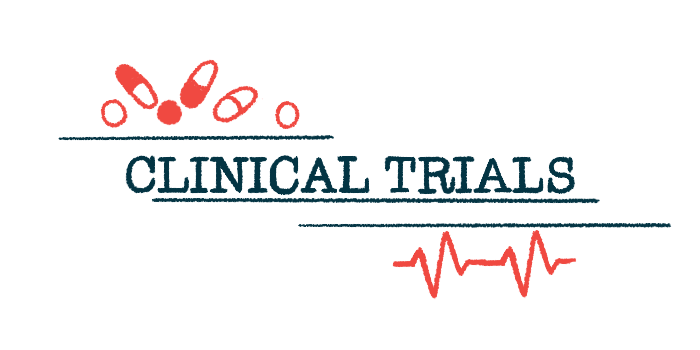MT-7117 found to ease sunlight sensitivity for EPP, XLP patients
Phase 2 trial also tested therapy's impact on life quality in porphyria
Written by |

MT-7117 (dersimelagon), an investigational oral therapy from Mitsubishi Tanabe Pharma, safely reduced sunlight sensitivity and improved quality of life in people with erythropoietic protoporphyria (EPP) and X-linked protoporphyria (XLP) — two types of cutaneous porphyria, which primarily affects the skin — in a Phase 2 trial.
Findings from the trial, which wrapped up in 2019, have now been published in The New England Journal of Medicine, in a study titled “Dersimelagon in Erythropoietic Protoporphyrias.”
“At both doses evaluated, [MT-7117] significantly increased the duration of symptom-free sunlight exposure in patients with erythropoietic protoporphyria or X-linked protoporphyria,” the researchers wrote.
Positive early results from the study had prompted the launch of a larger Phase 3 trial (NCT04402489) in 2020. That trial now is also complete, with an open-label extension study (NCT05005975) ongoing to assess the therapy over a further two-year period.
Sunlight sensitivity reduced among patients over 4 months
As with other porphyria types, EPP and XLP are caused by mutations in genes involved in the production of heme, a molecule that enables red blood cells to carry oxygen through the body.
Consequently, heme precursors called porphyrins build up to toxic levels in the body. EPP and XLP in particular are marked by the buildup of protoporphyrin, which causes extreme light sensitivity and pain attacks upon sunlight exposure.
MT-7117 is a small molecule that activates melanocortin-1 receptor (MC1R), a protein involved in skin pigmentation and sunlight protection. By activating MC1R, MT-7117 is expected to boost the production of a type of melanin that protects the skin from sun damage, thus minimizing symptoms of photosensitivity in EPP and XLP patients.
After the therapy was found safe among healthy adults in a Phase 1 trial (NCT02834442), the Mitsubishi Tanabe Pharma-sponsored Phase 2 trial, called ENDEAVOR (NCT03520036), was launched. Its goal was to evaluate the safety and efficacy of MT-7117 against a placebo in 93 EPP and nine XLP patients, ages 18-75.
Participants were recruited across nine U.S. sites and were randomly assigned to receive oral MT-7117 (100 or 300 mg) or a placebo, once daily for 16 weeks, or about four months. Additional monitoring then continued for six weeks.
Treatment groups were well balanced in terms of clinical characteristics, but more participants in the placebo group (63%) were men, compared with the 100 mg (55%) and 300 mg (26%) groups.
The trial’s main goal was to assess changes in sunlight sensitivity and other symptoms related to sun exposure from before the trial (baseline) to four months after the start of treatment. Patients were asked to record their daily sunlight exposure in an electronic diary, along with how soon symptoms emerged after such exposure.
The results showed that MT-7117 significantly prolonged the period of symptom-free sunlight exposure relative to the placebo.
Patients given 100 mg MT-7117 saw a symptom-free period upon sunlight exposure that was 53.8 minutes longer compared with baseline relative to the placebo. The change from baseline in the 300 mg MT-7117 group was 62.5 minutes longer than with the placebo.
These gains were observed regardless of patients’ skin type and baseline protoporphyrin levels.
Individuals treated with either dose of MT-7117 experienced about 40% fewer sunlight exposure episodes accompanied by symptoms than the placebo group. Those in the 100 mg group also experienced 60% fewer total pain events compared with the placebo, and those given 300 mg saw a 50% reduction in pain events.
Quality of life assessments after 16 weeks, or about four months, indicated that patients receiving either dose of the experimental therapy saw greater life quality gains, improvements in physical function, and decreases in pain intensity relative to those given the placebo.
Protoporphyrin levels did not significantly change during the trial, but melanin levels increased with MT-7117 relative to the placebo.
The treatment was generally well-tolerated, with the most common side effects being nausea, freckles, headache, and excessive skin pigmentation. Most side effects were mild or moderate and resolved during the trial period.
Results from this phase 2 trial support the effectiveness and safety of [MT-7117] and its further development as a potential oral treatment option for increasing light tolerance in patients with [EPP] or [XLP].
Among all 102 participants, 90% completed the entire treatment period. Three discontinuations were due to adverse events among MT-7117-treated patients.
“Results from this phase 2 trial support the effectiveness and safety of [MT-7117] and its further development as a potential oral treatment option for increasing light tolerance in patients with [EPP] or [XLP],” the researchers wrote.
In the Phase 3 trial, participants were randomly assigned to receive a low or high dose of MT-7117, or a placebo, given once daily for about six months. This was followed by an optional extension study in which all are receiving MT-7117. Outcome measures were similar to those of the Phase 2 trial.
Results from the main trial, which is now completed, have not been released.
MT-7117 received fast track designation from the U.S. Food and Drug Administration for the treatment of EPP in 2018. The experimental therapy also is in Phase 2 clinical testing for the treatment of scleroderma.






